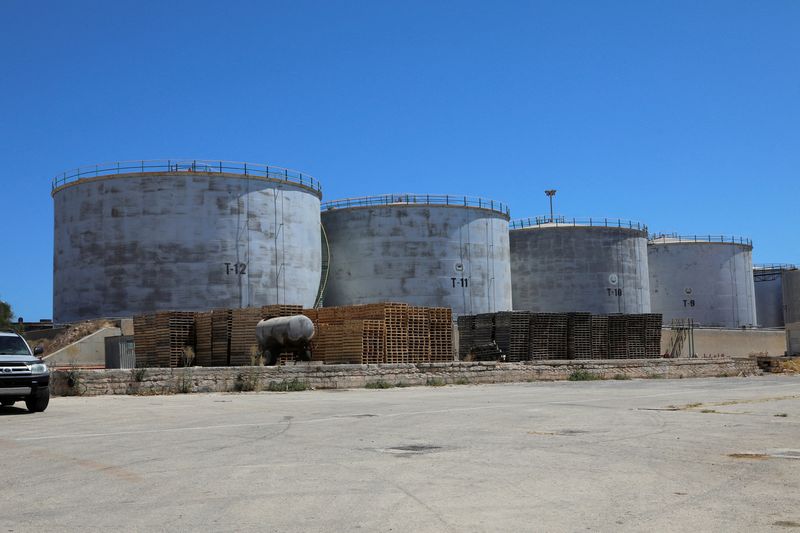
By Yuka Obayashi and Jeslyn Lerh
SINGAPORE (Reuters) -Oil prices fell on Wednesday, extending a plunge of more than 4% the previous day, on expectations that a political dispute halting Libyan exports could be resolved and concerns over lower global demand growth.
Brent crude futures for November fell 37 cents, or 0.5%, to $73.38 by 0330 GMT, after the previous session’s fall of 4.9%. U.S. West Texas Intermediate crude futures for October were down 41 cents, or 0.6%, at $69.93, after dropping 4.4% on Tuesday.
Both contracts fell to their lowest since December on signs of a deal to resolve the political dispute between rival factions in Libya that cut output by about half and curbed exports.
“Selling continued in Asia amid expectations of a potential deal to resolve the dispute in Libya,” said Toshitaka Tazawa, an analyst at Fujitomi Securities Co Ltd.
“The market remained under pressure also because of concerns over sluggish fuel demand following weak economic indicators from China and the United States.”
Libya’s two legislative bodies agreed on Tuesday to jointly appoint a central bank governor, potentially defusing the battle for control of oil revenue that set off the dispute.
Libyan oil exports at major ports were halted on Monday and production cut nationwide. Libya’s National Oil Corp (NOC) declared force majeure on its El Feel oilfield from Sept. 2.
“Easing political tension in Libya potentially seeing some supplies return and economic weakness in the world’s largest oil consumers, U.S. and China, serve as a confluence of headwinds for oil prices,” said Yeap Jun Rong, a market strategist at IG.
“The faster contraction in new orders and production, along with increasing prices, presented in the U.S. manufacturing PMI data seems to be renewing growth fears, which does not offer much reassurance around the oil demand outlook.”
Market sentiment weakened after Tuesday’s Institute for Supply Management data showing that U.S. manufacturing remained subdued, despite a modest improvement in August from an eight-month low in July.
In China, the world’s biggest importer of crude, recent data showed that manufacturing activity sank to a six-month low in August, when growth in new home prices slowed.

Weekly U.S. inventory data has been delayed by Monday’s Labor Day holiday. The report from the American Petroleum Institute is due at 4:30 p.m. EDT (2030 GMT) on Wednesday and data from the Energy Information Administration will be published at 11:00 a.m. EDT (1500 GMT) on Thursday.
U.S. crude oil and gasoline stockpiles were expected to have fallen last week, while distillate inventories probably rose, a preliminary Reuters poll showed on Tuesday. [EIA/S][API/S]
This post is originally published on INVESTING.



